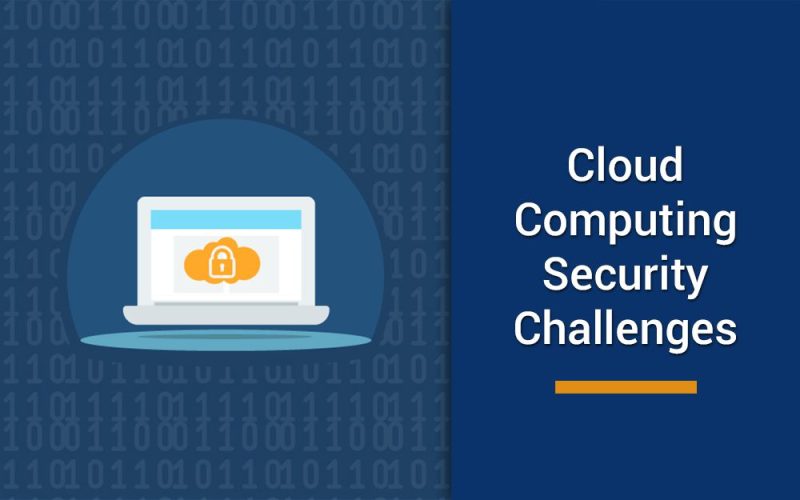What are the Top 7 Advanced Cloud Server Security Challenges?

Introduction
The cloud computing environment presents a unique set of challenges for enterprise security teams. While the threats you face in your data center are not going away, the size and scope of those threats can be mitigated by using cloud services. In this post, we’ll discuss seven common challenges of securing your cloud server environment, including how to overcome them.
1. Control Your Cloud
The first step to achieving a secure cloud is to control your own data. This means you must take steps to protect yourself from the threats that exist on the internet and in our world. You can use security tools, like firewalls and intrusion detection systems (IDS), Multifactor Authentication (MFA), Web Application Firewall (WAF) which will prevent unauthorized access to your network by hackers or malware programs.
You can also use a cloud security service if you want secure access for all users of a particular machine or application, but this may require more work than simply relying on one solution alone could provide because each user needs to have their own account set up with specific permissions based on their role within an organization’s structure—for example: CEO vs Contractor vs Salesperson vs Marketing Director vs Customer Service Representative etc…
2. Protect Your Applications
Protecting your applications is one of the most important things you can do to ensure a secure cloud. If your application is attacked by hackers, or if it loses information due to data loss, unauthorized access or denial of service attacks—or even if malware infects it—the consequences could be catastrophic for your business.
You need to protect each layer of your infrastructure:
· Application layer: Applications are the most vulnerable part of an application architecture because they are designed for human interaction and therefore contain many potential vulnerabilities that can be exploited by bad actors trying to compromise them (e.g., SQL injection attacks). In addition, conventional applications may not be well suited for use with public clouds such as AWS due to their lack of security controls built into programmatic interfaces like Amazon API Gateway or Lambda functions used in other services like AWS Lambda + RDS Database tiering tool which helps manage multiple databases easily through auto-scaling functionality provided by VPC. There is no charge to create a VPC peering connection. There is a charge for data transfer across peering connections.
3. Keep Data Safe
Data security is a top priority for any business. You need to be able to access your data from anywhere, at any time, and you need to store it securely. It’s also essential that you protect your data from threats like hackers or malware.
The best way to keep your server safe is by using an advanced cloud-based security solution that has been designed specifically with security in mind. This will help ensure that unauthorized users cannot gain access to sensitive information on the network or even modify existing files—all while encrypting communication between servers so there are no holes through which hackers could sneak through undetected!
4. Validate Cloud Security and Compliance Policies
· Cloud security policies should be aligned with your business goals.
· Cloud security policies should be based on your risk profile.
· Cloud security policies should be regularly reviewed and updated.
· A third-party review of your cloud server security and compliance policies is recommended to ensure that they are current, valid, and appropriate for the organization’s needs.
5. Maintain Business Agility and Scale
· Maintain business agility and scale.
· How to maintain business agility and scale?
· How to maintain business agility and scale in a cloud environment?
· How to maintain business agility and scale in a public cloud environment
6. Stay on Top of Threats
It’s important to stay on top of the latest threats and vulnerabilities, as well as keep up with patches and updates. You need to know how to respond when attacks occur, as well as prevent them from happening in the first place.
The seventh challenge is staying on top of threats.
7. Prove ROI and Compliance
· The major challenge in cloud computing is proving that the solution you have deployed has a return on investment (ROI). This can be done by providing proof of compliance with standards, regulations and regulatory requirements. The more complex your solution is, the higher it will be in terms of cost as well as complexity to implement even if you have an excellent security team at hand.
Find out the challenges you need to overcome to ensure the security of your cloud server environment.
Cloud security is a combination of people, processes and technology. You need to be aware of all the threats that your cloud server environment faces so that you can protect it from them.
When it comes to cloud servers, there are many ways in which they can be compromised. The most common way is by hackers who use phishing attacks as well as other methods like social engineering or even physical theft if necessary. It’s important for you to know about these methods so that you can prevent them from happening at all costs!
Conclusion
The best way to stay on top of these challenges is to have a clear understanding of the threats, vulnerabilities, and the security controls you need to implement within your current environment. You can use this guide to help determine what needs to be done today so that tomorrow morning when it’s time for work, you don’t find yourself dealing with any more issues than usual. If nothing else, at least now when someone asks what kind of server setup they should get for their business, you can give them an honest answer about how much effort goes into keeping data safe from hackers!
Contact TI Infotech Private Limited for your Cloud Server Security Review
